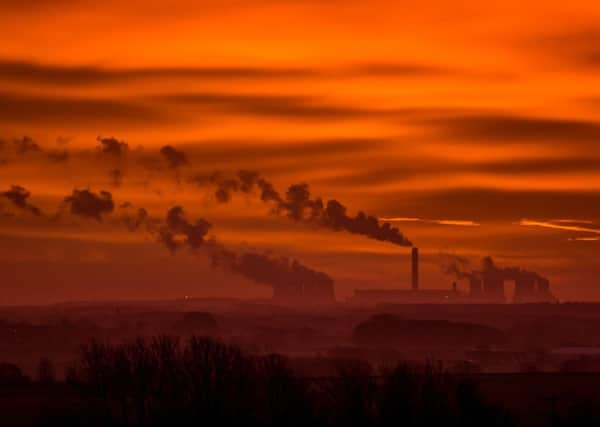Keeping the home fires burning under a red sky


The site is responsible for generating seven per cent of the UK’s electricity and in recent years has become a predominantly biomass-fuelled generator.
Around 70 per cent of the electricity Drax produces – enough to power Leeds, Sheffield, Manchester and Liverpool – is now made using compressed wood pellets rather than coal which cuts total carbon dioxide emissions. It uses pellets mostly from American manufacturing plants.
Advertisement
Hide AdAdvertisement
Hide AdWhile officials at Drax are keen to talk up its environmental credentials, the power station has not always been universally popular.
In 2006, hundreds of climate change campaigners marched on the plant in a demonstration against the use of coal at the site which resulted in 38 people being arrested.
Then two years later, demonstrators halted a coal train outside Drax and shovelled its contents onto the only rail line into the plant.
The site was first established after the Selby coalfield was discovered in 1967 and was up and running in 1975, doubling in size in 1986. Since privatisation in 1990, ownership has changed a number of times and the station is now operated by Drax Group.
Advertisement
Hide AdAdvertisement
Hide AdDrax has been moving with the times as it moves away from a reputation as the site being one of the biggest polluters in Europe and the firm eventually hopes to run the station entirely fuelled by biomass instead of coal.
The power station produced 16 per cent of the UK’s renewable electricity from sustainable wood pellets in 2016. Coal contributed just nine per cent of Britain’s electricity during 2016, down from 42 per cent in 2012.
There is little doubt the station will have a vital role to play as it continues to take steps towards helping the country produce more environmentally-friendly energy.
Technical details: Nikon D4 camera with a Nikon 300mm lens, Aperture f 5.0, Shutter Speed, 1/800th sec, ISO 800.